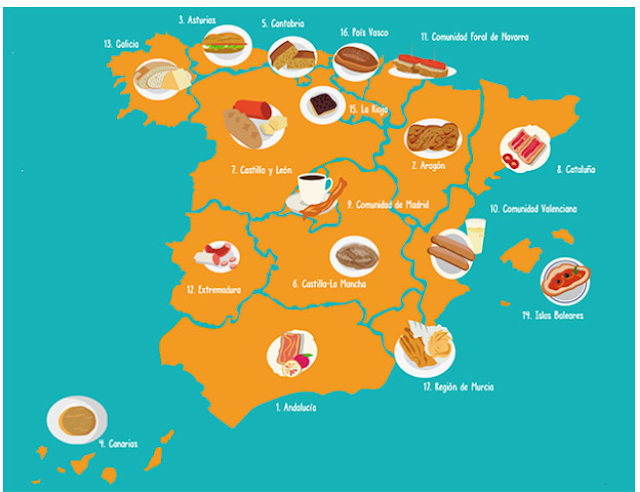Eccoci per delle altre idee legate al mondo del calcio per delle classi di livello B1-B2.
PRIMA ATTIVITA': CANZONE: UN'ESTATE ITALIANA
1. Chiedere agli alunni di fare un brainstorming sulla parola ESTATE. Cosa succede in estate?
2. Chiedere agli studenti di fare un esercizio di completamento con ascolto della canzone.
Forse non sarà una canzone
A cambiare le ................ del gioco
Ma voglio viverla così quest'..............
Senza ............. e con il cuore in gola.
E il mondo in una giostra di colori
E il vento accarezza le ..............
E il vento accarezza le ..............
Arriva un ............... e ti trascina via
E sciogli in un ............ la follia
Notti magiche
................ un goal
Sotto il cielo
di un'estate italiana
E negli occhi tuoi
voglia di ............
Un'estate
Un'avventura in più
Quel .............. che comincia da bambino
e che ti porta sempre più lontano
non è una favola e dagli ............
escono i ragazzi e siamo noi
Notti magiche....
e che ti porta sempre più lontano
non è una favola e dagli ............
escono i ragazzi e siamo noi
Notti magiche....
3. Se la classe è fatta di studenti anglofoni o ispanofoni si può fare un gioco di traduzione poiché esiste anche la versione inglese e spagnola di questa canzone.
4. Dividere la classe in squadre e chiedere di annotare tutte le cose tipiche italiane che sono state introdotte nel video. Vince chi dopo due visioni ne ha scritte di più.
SECONDA ATTIVITA'
Chiedere agli studenti se conoscono delle canzoni di squadra e se è una cosa comune nel loro Paese.
Chiedere di pensare a gruppi cosa ci vuole per fare una canzone di squadra di successo.
Chiedere di iscriversi a questo forum e insieme formulare una risposta al quesito: https://it.answers.yahoo.com/question/index?qid=20100522131825AAjkRjN&guccounter=1
Chiedere agli studenti di scrivere la loro canzone.
TERZA ATTIVITA'
Chiedere agli studenti di commentare una parte di una partita di calcio in gruppo.
Se gli studenti hanno degli Smartphones possono scaricare l'app GoalShouter per rendere l'attività più tecnologica, immediata e piacevole :)
QUARTA ATTIVITA': TRAILER CINEMATOGRAFICO

Ecco alcune attività a cui ho pensato basate sul trailer del film "L'allenatore nel pallone 2"
1. Per prima cosa si potrebbe fare un'introduzione per fare conoscere l'attore Lino Banfi e l'accento pugliese. Chiediamo agli studenti se anche nel loro territorio di origine esiste un dialetto e quali sono le sue caratteristiche. Per 5 minuti diventeranno professori del loro dialetto per la classe. Visione in classe del video del comico Pino Campagna sul pugliese: https://www.youtube.com/watch?v=T4lcaD_AFXo.
2. Chiedere di cercare in internet la trama del film "L'allenatore nel pallone" in modo da fare capire loro meglio il contesto del sequel. Dopo 15 minuti chiedere ad ognuno di prendere un foglio e cominciare a scrivere il proprio riassunto. Dopo lo STOP devono passare il foglio al vicino che deve continuare da dove si è fermato il compagno e così via. Lettura e verifica.
3. Chiedere agli studenti di pensare alle qualità di un allenatore.
Simulare un dialogo tra un allenatore e la propria squadra di calcio che sta perdendo un incontro importantissimo.
4. Il futuro. Gli studenti devono immaginare di diventare presto gli allenatori della loro squadra del cuore. Cosa faranno per la propria squadra? Scrivere almeno 5 frasi a coppie.
5. Visione del trailer. Guarda fino al minuto 0.30. Come pensi che sia il modulo a farfalla? Brainstorming sugli animali in italiano. Un gruppo deve inventare un modulo legato a un animale e mimarlo.
6. Nel trailer vengono pronunciate delle frasi in latino.
Dibattito: si parla il latino ancora oggi nella tua lingua? Perché?
Gli studenti si documentano su alcune frasi o parole che ancora si utilizzano nell'italiano moderno. Preparano su fogli separati le parole e / o frasi e le definizioni, le ritagliano una a una e le passano ai compagni che dovranno collegarle in modo adeguato.
Esempio parole:
Curriculum
Agenda
Bis
Bonus
Se gli studenti hanno degli Smartphones possono scaricare l'app GoalShouter per rendere l'attività più tecnologica, immediata e piacevole :)
QUARTA ATTIVITA': TRAILER CINEMATOGRAFICO

Ecco alcune attività a cui ho pensato basate sul trailer del film "L'allenatore nel pallone 2"
1. Per prima cosa si potrebbe fare un'introduzione per fare conoscere l'attore Lino Banfi e l'accento pugliese. Chiediamo agli studenti se anche nel loro territorio di origine esiste un dialetto e quali sono le sue caratteristiche. Per 5 minuti diventeranno professori del loro dialetto per la classe. Visione in classe del video del comico Pino Campagna sul pugliese: https://www.youtube.com/watch?v=T4lcaD_AFXo.
2. Chiedere di cercare in internet la trama del film "L'allenatore nel pallone" in modo da fare capire loro meglio il contesto del sequel. Dopo 15 minuti chiedere ad ognuno di prendere un foglio e cominciare a scrivere il proprio riassunto. Dopo lo STOP devono passare il foglio al vicino che deve continuare da dove si è fermato il compagno e così via. Lettura e verifica.
3. Chiedere agli studenti di pensare alle qualità di un allenatore.
Simulare un dialogo tra un allenatore e la propria squadra di calcio che sta perdendo un incontro importantissimo.
4. Il futuro. Gli studenti devono immaginare di diventare presto gli allenatori della loro squadra del cuore. Cosa faranno per la propria squadra? Scrivere almeno 5 frasi a coppie.
5. Visione del trailer. Guarda fino al minuto 0.30. Come pensi che sia il modulo a farfalla? Brainstorming sugli animali in italiano. Un gruppo deve inventare un modulo legato a un animale e mimarlo.
6. Nel trailer vengono pronunciate delle frasi in latino.
Dibattito: si parla il latino ancora oggi nella tua lingua? Perché?
Gli studenti si documentano su alcune frasi o parole che ancora si utilizzano nell'italiano moderno. Preparano su fogli separati le parole e / o frasi e le definizioni, le ritagliano una a una e le passano ai compagni che dovranno collegarle in modo adeguato.
Esempio parole:
Curriculum
Agenda
Bis
Bonus
7. La donna invita l'allenatore a casa sua al minuto 1:10
Ripasso delle espressioni che si usano per invitare, accettare e rifiutare.
Ecco un esercizio carino da proporre per fare pratica.
E' in inglese ma possiamo preparare le cards in italiano: http://elta.org.rs/kio/nl/06-2014/serbia-elta-newsletter-2014-june_LessonPlan_Gavrilovic.pdf
QUINTA ATTIVITA'
Chiedere di mettere in scena uno spot breve per sponsorizzare questi mondiali.
Fare vedere qualche pubblicità degli anni passati
SESTA ATTIVITA'
Si possono mostrare degli striscioni divertenti per finire la lezione sorridendo: https://www.youtube.com/watch?v=rAJTsFnDoBo














































